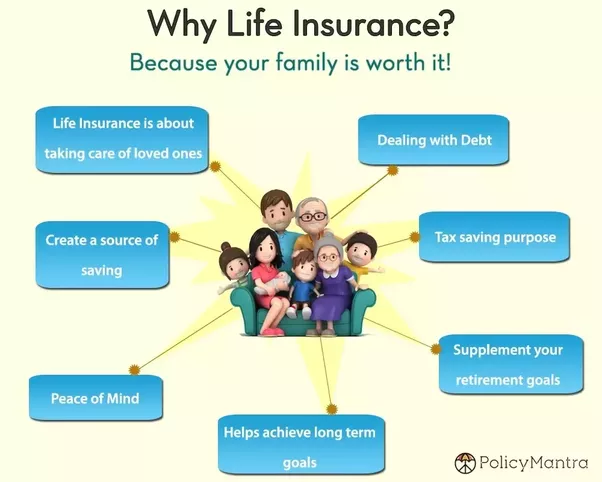5 Easy Facts About Pacific Prime Described
5 Easy Facts About Pacific Prime Described
Blog Article
Pacific Prime Can Be Fun For Everyone
Table of ContentsGetting The Pacific Prime To WorkThe Main Principles Of Pacific Prime Not known Facts About Pacific PrimeA Biased View of Pacific PrimeThe 2-Minute Rule for Pacific Prime

This is since the data were collected for a period of strong financial efficiency. Of the estimated 42 million individuals that were uninsured, all yet about 420,000 (regarding 1 percent) were under 65 years old, the age at which most Americans become eligible for Medicare; 32 million were grownups between ages 18 and 65, around 19 percent of all grownups in this age group; and 10 million were kids under 18 years old, concerning 13.9 percent of all children (Mills, 2000).
These estimates of the number of individuals without insurance are created from the annual March Supplement to the Existing Population Survey (CPS), performed by the Demographics Bureau. Unless otherwise kept in mind, national quotes of people without health insurance policy and percentages of the populace with various kinds of protection are based upon the CPS, the most widely used source of quotes of insurance policy protection and uninsurance prices.
Pacific Prime for Dummies

Still, the CPS is especially useful because it generates yearly quotes fairly quickly, reporting the previous year's insurance coverage approximates each September, and because it is the basis for a constant collection of quotes for greater than two decades, enabling for analysis of trends in coverage with time. For these factors, in addition to the substantial use the CPS in various other research studies of insurance protection that are offered in this record, we rely upon CPS price quotes, with limitations noted.

The price quote of the variety of without insurance people increases when a population's insurance coverage standing is tracked for numerous years. Over a three-year period starting early in 1993, 72 million people, 29 percent of the united state population, were without coverage for at least one month. Within a solitary year (1994 ), 53 million individuals experienced a minimum of a month without coverage (Bennefield, 1998a)
6 out of every 10 without insurance grownups are themselves used. Working does improve the chance that one and one's household members will certainly have insurance, it is not a warranty. Even participants of family members with two permanent wage income earners have almost a one-in-ten opportunity of being without insurance (9.1 percent uninsured price) (Hoffman and Pohl, 2000).
Examine This Report about Pacific Prime
New immigrants redirected here make up a significant proportion of individuals without health and wellness insurance coverage. One analysis has actually associated a substantial part of the recent development in the dimension of the U.S. without insurance population to immigrants that got here in the nation between 1994 and 1998 (Camarota and Edwards, 2000). Current immigrants (those who involved the United States within the past 4 years) do have a high price of being without insurance (46 percent), however they and their kids account for just 6 percent of those without insurance coverage across the country (Holahan et al., 2001).
The partnership between health and wellness insurance policy and accessibility to care is well developed, as recorded later on in this phase. Although the partnership in between medical insurance and health outcomes is neither direct nor simple, a comprehensive scientific and health and wellness solutions study literary works web links medical insurance protection to better accessibility to care, far better quality, and improved personal and populace wellness standing.
Degrees of evaluation for analyzing the results of uninsurance. This conversation of health insurance policy coverage focuses mainly on the U.S. population under age 65 because practically all Americans 65 and older have Medicare or various other public coverage. It concentrates specifically on those without any kind of health insurance policy for any type of size of time.
Things about Pacific Prime
The troubles faced by the underinsured are in some aspects comparable to those faced by the without insurance, although they are usually less serious. expat insurance. Uninsurance and underinsurance, however, include distinctly different policy issues, and the methods for resolving them may vary. Throughout this research and the 5 records to adhere to, the main emphasis gets on individuals without any medical insurance and thus no help in spending for wellness treatment beyond what is available with charity and safeguard organizations
Medical insurance is a powerful factor affecting invoice of treatment due to the fact that both patients and physicians reply to the out-of-pocket price of services - https://pacificpr1me.wordpress.com/2024/04/03/pacific-prime-your-gateway-to-comprehensive-international-health-insurance-solutions/. Health and wellness insurance coverage, nevertheless, is neither essential nor adequate to access to clinical solutions. The independent and direct effect of health and wellness insurance coverage on access to wellness solutions is well developed.
Others will get the healthcare they need also without medical insurance, by paying for it expense or seeking it from carriers that offer treatment totally free or at extremely subsidized prices. For still others, health insurance policy alone does not ensure invoice of treatment due to other nonfinancial barriers, such as an absence of healthcare carriers in their community, limited accessibility to transportation, illiteracy, or linguistic and cultural differences.
Pacific Prime Fundamentals Explained
Formal study about uninsured populations in the USA dates to the late 1920s and very early 1930s when the Board on the Price of Healthcare generated a collection of records concerning financing medical professional office visits and hospital stays. This issue ended up being prominent as the varieties of clinically indigent climbed up during the Great Anxiety.
Report this page